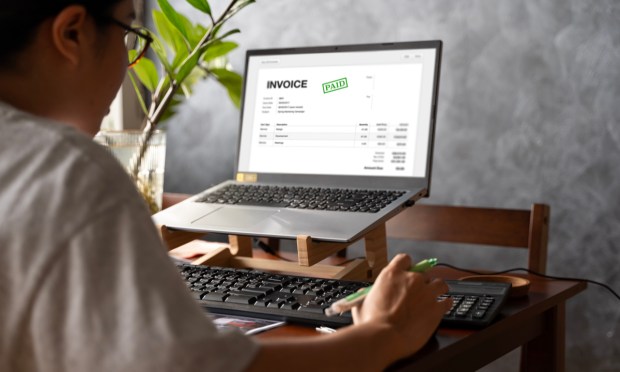73% of Firms Say AP Automation Improves Cash Flow

Businesses are expecting a significant increase in both payments made and invoices delivered over the next three years. In fact, on average, firms — regardless of size or industry — anticipate a 50% increase in payments made and a 46% increase in invoices delivered.
The numbers are even more significant for medium-sized firms, — those with annual revenues between $3.5 million and $15 million — according to a research study conducted jointly by PYMNTS Intelligence in collaboration with Amex.
In this category, almost 80% anticipate an increase in payments through their accounts payable (AP) systems, and 75% predict an increase in the invoices managed through their accounts receivable (AR) systems over the next three years.
This expected growth in invoices poses a challenge for businesses that still rely on manual AP and AR processes, setting the stage for a forthcoming wave of automation in the years ahead.
As the study highlighted, automating AP and AR processes can lead to more efficient and accurate operations, with firms that have already automated their processes experiencing benefits such as improved cash flow, increased savings, and streamlined processes.
Specifically, the majority of executives surveyed reported that AP automation improves cash flow (73%) and AR automation leads to efficient, accurate or streamlined processes (83%). Furthermore, automation can contribute to business growth and enhance vendor satisfaction.
Despite these benefits, more than one-third of firms have not automated any part of their AP and AR processes, primarily due to concerns about the cost and complexity of implementation. However, these firms may be at a disadvantage as they are more likely to experience challenges such as fraud and transparency issues in their AP processes, the study found.
Moreover, with the anticipated growth in invoices, businesses that have not yet automated their processes may struggle to keep up with the workload. Manual processing can lead to delays in payments and collections, affecting cash flow and vendor relationships. In contrast, automating AP and AR processes can eliminate extra work and time, enabling businesses to send out invoices quicker and receive payments sooner.
Further data highlights the payment methods preferred by mid-size firms when making and receiving payments. Instant money transfers, mobile payment systems, and credit cards/purchasing cards are the top choices for these businesses. This preference for instant transfers and digital payment methods further emphasizes the need for automation to streamline payment processes.
In conclusion, the report on AP/AR trends and the path to profitability highlights the growing importance of automation in invoice processing, especially for the significant share of firms that have yet to automate any part of their AP and AR processes.
This delay in automation could lead to challenges and inefficiencies in payment processing leaving businesses to miss out on improved cash flow, increased savings, and streamlined operations, which ultimately contributes to their overall profitability and success.


